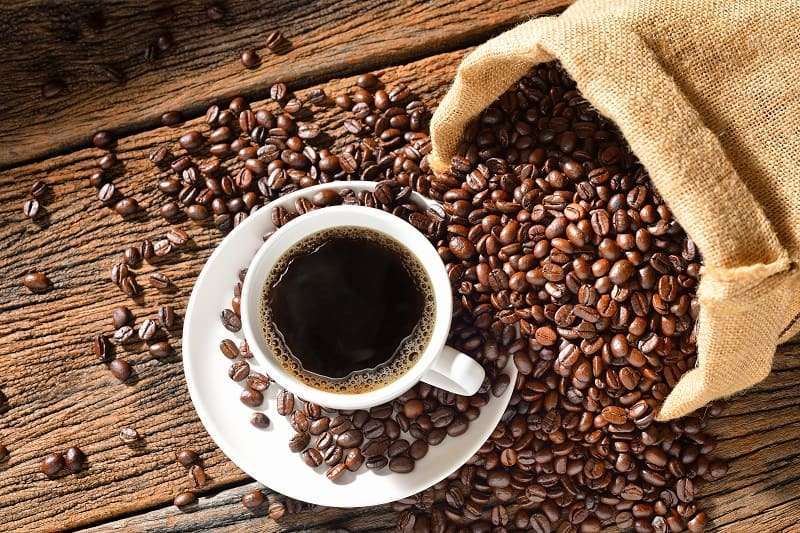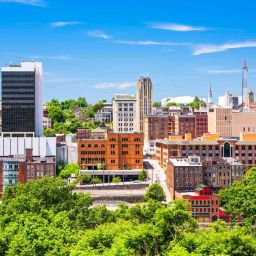
Bitterness in coffee is a complex trait influenced by various factors, from the type of coffee bean to the brewing process. Typically, bitterness arises from compounds such as chlorogenic acid lactones and phenylindanes, which are more prevalent in Robusta beans than Arabica beans. Additionally, the roast level significantly impacts bitterness; dark roasts tend to have a more bitter flavor due to the breakdown of sugars and the formation of bitter compounds during the roasting process.
Brewing methods also play a crucial role; improper brewing techniques can lead to over-extraction, a common cause of bitterness. Factors like water temperature, grind size, and brewing time need to be optimized to extract the desirable flavors without introducing excessive bitterness.
Key Takeaways
- Choose Arabica Over Robusta: Arabica beans are generally less bitter and have a more complex flavor profile compared to Robusta beans.
- Opt for Light to Medium Roasts: These roasts tend to be less bitter than dark roasts, preserving the bean’s natural flavors.
- Pay Attention to Brewing Methods: Techniques like cold brew or pour-over (using devices like Chemex) can significantly reduce bitterness by extracting the coffee’s flavors more gently and efficiently.
- Adjust Brewing Parameters: Fine-tune the coffee-to-water ratio, grind size, and brewing time to avoid over-extraction, which can lead to bitterness.
- Use Fresh, Quality Beans: Freshly roasted beans not only offer better flavor but also tend to be less bitter than stale or improperly stored beans.
Types of Coffee Beans
Arabica vs. Robusta Beans
The coffee world is predominantly ruled by two types of beans: Arabica and Robusta. Arabica beans are celebrated for their sweet, complex flavor profiles, offering a vast array of tastes that can include hints of fruit, sugar, and berries. They are generally considered superior in taste due to their lower bitterness and higher quality.
Arabica beans thrive at high altitudes in the world’s tropical belt, requiring specific climate conditions that contribute to their nuanced flavors. In contrast, Robusta beans are known for their strong, harsh taste, with a higher caffeine content that contributes to their overall bitterness.
They are more resilient plants, able to grow at lower altitudes and offering higher yields. This makes Robusta beans cheaper to produce, often found in instant coffee blends and espresso due to their deep, robust flavor and the creamy crema they produce.
Coffee Bean Origin
The origin of coffee beans plays a significant role in determining the flavor profile and level of bitterness. Beans from Brazil often present a chocolatey, nutty flavor with a smooth, low-acid finish, making them less bitter.
Colombian coffee is prized for its mild, balanced flavor with fruity notes, while Sumatra Mandheling beans are known for their full body, low acidity, and rich, earthy flavors that translate into a smooth, minimally bitter cup. These regional characteristics are influenced by the local climate, soil, and altitude, all of which contribute to the unique taste and bitterness levels of the beans.
Roast Levels
Light to Medium Roasts
The roast level of coffee beans significantly affects their bitterness. Light roasts, often known as “cinnamon” or “first crack” roasts, are subjected to heat for a shorter period, preserving many of the original flavors of the bean, including acidity and fruitiness, and typically result in a less bitter taste.
Medium roasts, reaching temperatures slightly higher than light roasts, strike a balance between preserving the bean’s original flavors and developing new ones through the roasting process, such as nutty or chocolaty notes, while still maintaining low bitterness. These roasts are ideal for those seeking a harmonious blend of flavor and smoothness without the sharp bitterness that can come from darker roasts.
Dark Roasts
In contrast, dark roasts undergo a longer roasting process, where sugars caramelize and bitterness increases as the beans reach temperatures beyond the second crack. This level of roast produces beans with a bolder, more intense flavor, often with a smoky or burnt characteristic.
While some coffee drinkers appreciate the strong, robust flavors of dark roasts, they generally carry a higher level of bitterness due to the prolonged exposure to heat, which breaks down more of the bean’s natural sugars and develops bitter-tasting compounds.
Cold Brew and Nitro Cold Brew
Cold brew coffee, known for its smoothness and low acidity, is made by steeping coarse coffee grounds in cold water for an extended period, usually 12 to 24 hours. This method reduces the extraction of bitter compounds, resulting in a sweeter, smoother coffee.
Nitro cold brew takes this a step further by infusing the cold brew with nitrogen gas, creating a creamy, smooth texture with even less bitterness. The nitrogen infusion mimics the rich, velvety feel of a stout beer, making it a unique and flavorful way to enjoy coffee without the bitterness.
Pour-Over Methods (Chemex)
Pour-over coffee, particularly when brewed using a Chemex, can produce a cleaner, more refined cup of coffee with reduced bitterness. The Chemex uses thick paper filters that remove much of the coffee oils and sediments that can contribute to a bitter taste.
By allowing precise control over the water temperature and brewing time, pour-over methods enable a more targeted extraction of flavors, enhancing the sweetness and complexity of the coffee while minimizing bitterness.
French Press and Filter Coffee
The French press offers a full-bodied coffee by allowing the coffee grounds to steep directly in hot water, which can sometimes lead to a bitter taste if over-extracted. To reduce bitterness, it’s crucial to use a coarse grind, correct water temperature (between 195°F to 205°F), and a brewing time of no more than four minutes.
Similarly, filter coffee machines can produce a less bitter brew by ensuring the use of medium grinds and avoiding over-extraction. Using paper filters can also help trap bitter compounds, resulting in a smoother cup.
Adjusting Coffee-to-Water Ratio
The coffee-to-water ratio is fundamental in achieving the desired strength and flavor profile of coffee without introducing bitterness. Over-extraction, a common cause of bitterness, can be avoided by finding the right balance between coffee and water.
For most brewing methods, the Specialty Coffee Association recommends a starting ratio of 1:16 (1 part coffee to 16 parts water). However, this can be adjusted based on personal taste preferences and the brewing method used.
For example, espresso requires a much more concentrated ratio, while cold brew might need a more substantial coffee base. Experimenting with different ratios can help you find the perfect balance for a smooth, flavorful cup without the bitterness.
Grinding Techniques
The grind size of coffee beans significantly influences the taste and bitterness of the brew. A finer grind increases the surface area exposed to water, enhancing the extraction rate. This can lead to over-extraction if not monitored carefully, extracting too many bitter compounds.
Conversely, a coarser grind reduces the surface area and the rate of extraction, potentially under-extracting and resulting in a weak, sour cup if not adjusted correctly. For a smoother taste, start with a medium grind for most brewing methods and adjust according to taste. If the coffee is too bitter, try a slightly coarser grind to reduce extraction. Experimentation is key to finding the perfect grind size that yields a balanced, less bitter coffee.
FAQs
Water Quality and Brewing Temperature
The quality of water and brewing temperature are critical in influencing the bitterness of coffee. Hard water, which has a high mineral content, can enhance the extraction of bitter compounds, making the coffee taste more bitter. Using filtered or soft water can result in a smoother, less bitter cup.
Similarly, the optimal brewing temperature (195°F to 205°F) ensures that the coffee is extracted properly without extracting excessive bitterness. Brewing at lower temperatures can help in minimizing bitterness for a more balanced flavor.
Making Coffee Less Bitter Without Sugar or Cream
To reduce bitterness without resorting to sugar or cream, consider adjusting the brewing process. Using a coarser grind, decreasing brewing time, or lowering the water temperature can help.
Additionally, choosing a brewing method known for producing smoother coffee, like cold brew, can also significantly reduce bitterness. Experimenting with these variables can enhance the natural sweetness of the coffee, negating the need for sugar or cream.
Impact of Bean Freshness on Bitterness
The freshness of coffee beans has a direct impact on the taste and potential bitterness of the brew. Fresh beans contain more natural oils and flavors, which can produce a smoother, richer coffee.
Over time, beans oxidize and lose these oils, leading to a stale taste and increased bitterness. To minimize bitterness, use beans within a few weeks of roasting and store them properly in an airtight container away from light and moisture.
Final Thoughts
Selecting the least bitter coffee beans and achieving a smooth, enjoyable cup of coffee involves careful consideration of bean type, roast level, and brewing method. Adjusting grind size, water quality, and brewing temperature can further enhance the flavor profile, minimizing bitterness.
Ultimately, experimenting with these variables allows coffee enthusiasts to fine-tune their brewing process for the perfect cup of coffee that suits their taste preferences.









